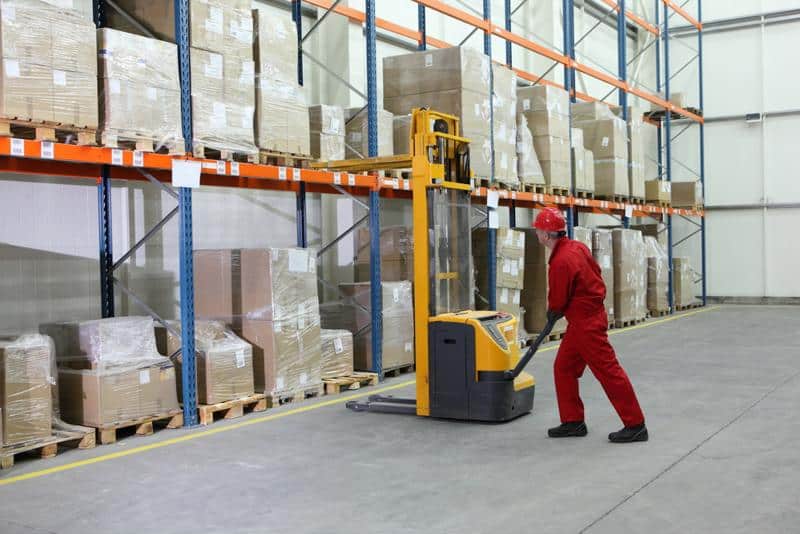Cloud computing has caught on in a big way. A recent report from Right Scale found that 81 percent of the enterprise sector has adopted a multi-cloud system in at least some way. Public cloud adoption rates have continued to climb, as well, with the report noting that 92 percent of users now employ cloud technology (up from 89 percent in 2017). Across the board, cloud networks are gaining usership due to its improved interfacing, less dependence on in-house technical teams and flexible program structure.
However, some industry verticals continue to lag behind. The latest international Bitglass survey found that the retail sector has been slow to adopt cloud infrastructure. Only 47.8 percent of responding retail organizations had deployed the often-used Microsoft Office 365 suite, and Amazon Web Services – the most popular cloud system – was only used by 9 percent.
In short, retail is being left behind, and that lag is a serious problem for the industry – in part because retail is a sector that can profit immensely from successful cloud integration. However, cybersecurity concerns and technical knowledge limitations may be slowing down the adoption rate.
Taking advantage of mobile hardware
Almost everyone has a smartphone, that’s not an exaggeration. According to Pew research data, 77 percent of Americans have this hardware, and that number has been climbing steadily. Since smartphones are becoming cheaper and more user friendly, it is unlikely to think this device will be replaced in the near future.
Because smartphones are so ubiquitous and convenient, consumers are using them for a wide variety of tasks, including shopping. OuterBox found that, as of early 2018, precisely 62 percent of shoppers had made a purchase through their phones within the last six months. Another 80 percent had used their smartphones to compare products and deals while inside a store.
With a cloud infrastructure, retailers can better take advantage of this mobile world. Successful retail locations should consider maintaining at least two online networks – one for customers and another for employees. This setup will prevent bandwidth lag and help keep the consumer away from sensitive information. In addition, creating a mobile experience that is user friendly and seamlessly interwoven with the physical shopping experience is paramount.
Rather than building such a system from the ground up, retailers can take advantage of the numerous infrastructure-as-a-service cloud options available, leveraging a reliable third party rather than an in-house IT team.
 Shoppers are already augmenting their experiences with external online information.
Shoppers are already augmenting their experiences with external online information.Getting ahead of the latest trends
Data drives business intelligence, this is true in every enterprise sector. In retail, housing the right products can mean the difference between turning a profit and going out of business. However, retailers still using traditional sales reporting will be slow to react to shopping trends, as these reports can take months to compile.
Data analytics is the actionable side of big data. In retail, customers convey valuable information about shopping habits before they even enter the store, but if this data is not being captured, it is essentially useless. Bringing in an encompassing data analytics solution, which can read information such as store purchases, response to sales and even social media reaction, can provide retailers with extra information to make actionable decisions.
“This analysis removes the guesswork about what will sell and which styles will flop on the shelves,” Roman Kirsch, CEO of fashion outlet Lesara, stated in an interview with Inc. “We don’t just know which new styles are popular, we can also identify retro trends that are making comebacks, which styles are on the way out, and that helps us to precisely manage our production.”
Improving inventory management
In addition, data analytics can be paired with a responsive inventory management program. Retail-as-a-service solutions exist and can be used to track stock availability, shipping orders and in-store details. With this software, retail companies can get a real-time image of how well products and even entire locations are performing.
These solutions can prevent item shortages before they occur and give retail chains a greater understanding of performance at every location.
 Using inventory management solutions can help retailers maximize their shipping profits. They can ship directly to the customer or to the retail location most in need.
Using inventory management solutions can help retailers maximize their shipping profits. They can ship directly to the customer or to the retail location most in need.Concerning cybersecurity
Perhaps one of the factors slowing the adoption of cloud technology in the retail sector is cybersecurity. Retail organizations process multitudes of consumer credit information by the day, and the fallout from a data breach can be fatal in this sector. When faced with using cloud technology or in-house data center solutions, retail executives may believe that the safest hands are still their own.
However, this may not be the case. Research firm Gartner predicted that through 2022, 95 percent of cloud security failures will be the customer’s fault, meaning that issues will not come from a software defect but through poor implementation. The firm also concluded that cloud structures will see as much as 60 percent fewer cyberattacks than those businesses with in-house servers.
Cloud infrastructure is secure but must be installed and operated properly. The only thing that retail agencies have to fear when it comes to this new solution is technological ignorance, but many cloud providers and third-party services stand ready to aid in the installation process.
